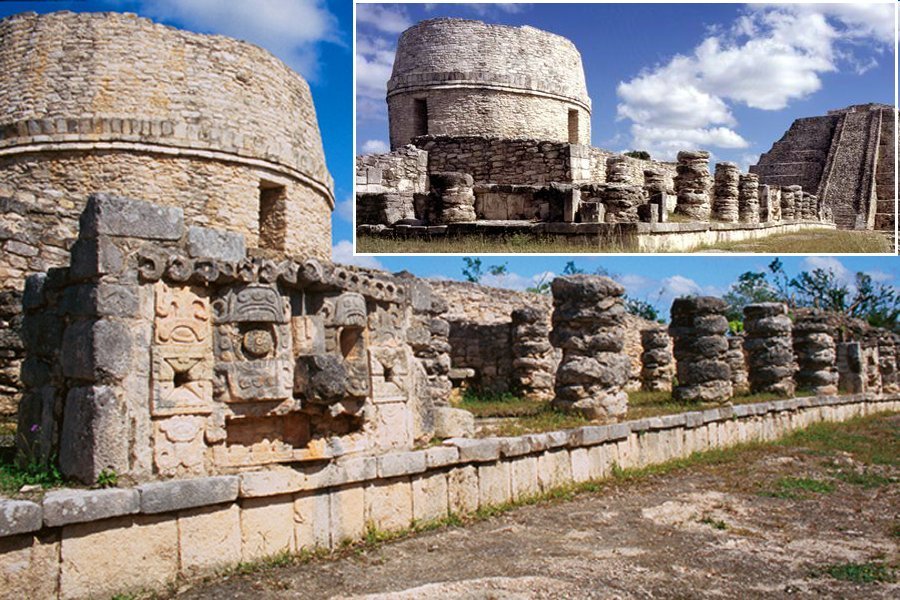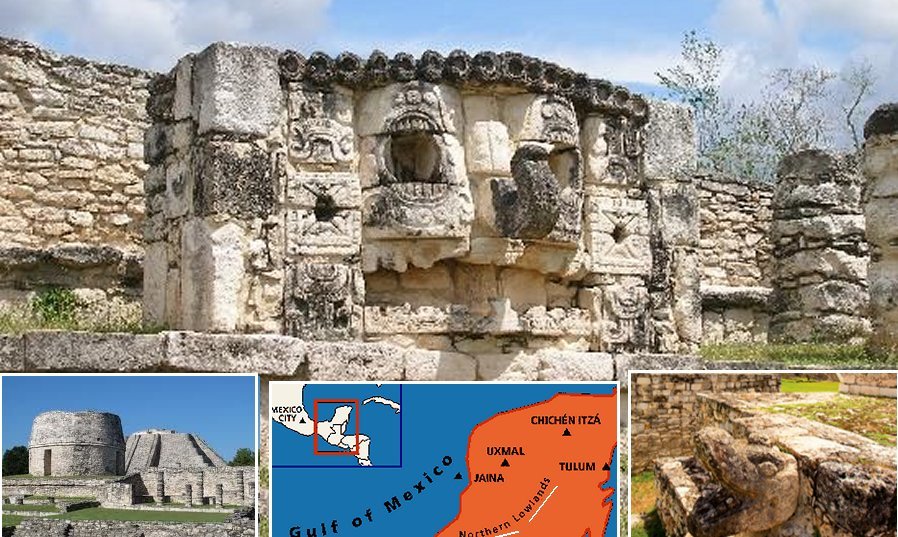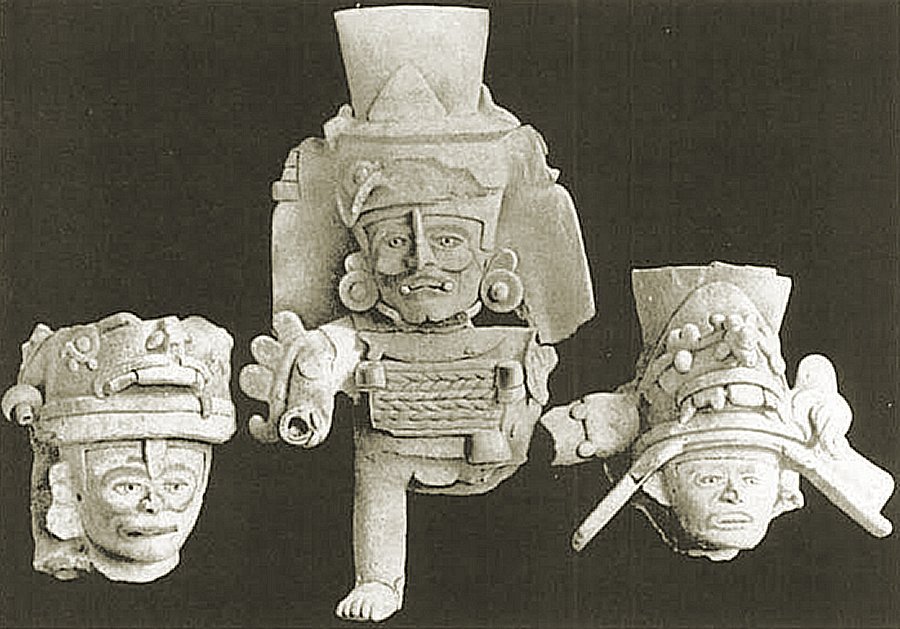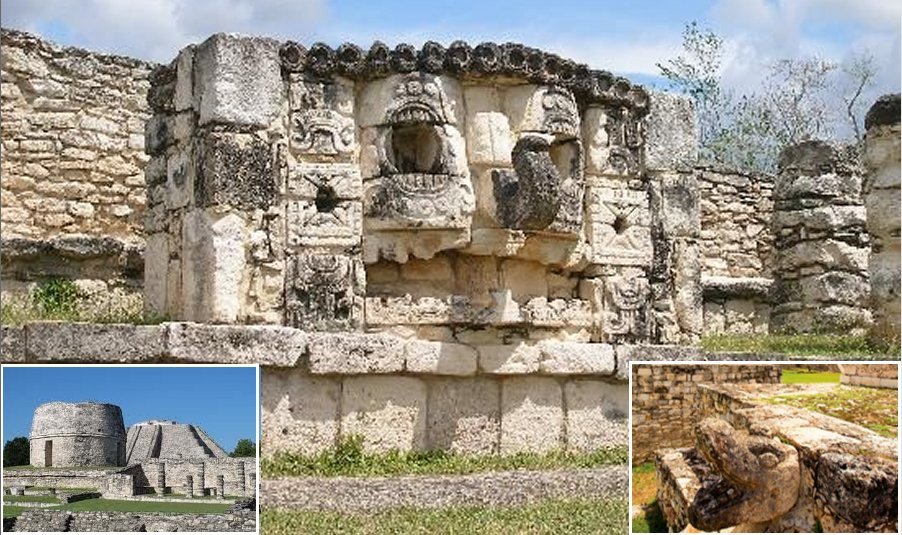Rise Of League Of Mayapán And The Last Great Maya Capital
A. Sutherland - AncientPages.com - According to the Book of Chilam Balam of Chumayel, Hunac Ceel, ruler of Mayapan, conquered Chichén Itzá in the 13th century. Archaeological data, on the other hand, indicates that Chichén Itzá declined as a regional center by 1250, before the rise of Mayapan.
Ruins of the last great city of the Maya – Mayapan. Images credit: Yucatan Gobierno del Estado
Earlier, from the 10th through the 12th century, Chichén Itzá, Uxmal, and Mayapan (means "The Flag or the Banner of the Mayas"), were the three most important and powerful ceremonial centers. Towards the year 1194, the political situation changed and Mayapán took the power from Chichén Itzá and managed to retain it until 1441. The fall of Chichén Itzá initiated two significant events in the history of Yucatán,
- the rise of the city-state of Mayapán, a new capital of the Maya civilization, established c.1263 and 1283 AD and
- the formation of the alliance of Yucatec rulers known as the League of Mayapán.
The League formed by the chieftains of Mayapán, Uxmal, and Chichén Itzá began successfully control the region until 1450 AD. However, not all people were satisfied. The League had many opponents among the inhabitants of the other Mayan kingdoms of the Peninsula.
Nobles were forced to live within the defensive walls of the city so their kingdoms had no choice but to stay loyal to the League.
“Mayapán ruled over a large territory in Yucatan. This realm was divided into provinces that were administered as a confederacy under Mayapán’s control. Each province (kuchcabal) was ruled from a prominent town…. They built houses for the lords only, dividing all the land among them, giving towns to each other…. The leaders of these subordinate towns lived in Mayapán, supported by their subjects, “where each lord could keep servants…” according to Bishop Landa’s 16th-century description.
By residing in the capital, these subordinate lords could be closely monitored by Mayapan’s rulers and it was life in captivity.
Around 1440 – 1450 AD, the people who lived in captivity started rebelling against the rule of Mayapán. The League began to decline and by 1461 it was completely disintegrated. The city of Mayapan was burned and abandoned.
City Of Mayapán Resembled Chichén Itzá
Today, the walled city of Mayapán, (known as "Flag of the Mayas"), is considered the last great Mayan capital. It was built in the likeness of Chichén Itzá. At its peak, Mayapán was the most important city but its population was only 15,000 and it covered an area of only 4.2 square kilometers (1.6 miles).
Mayapán-style ceramic idols represent images of gods and were used by the Maya for burning incense. Image credit: Thomas Gann, 1900
About 10-12,000 people lived within the walled city of Mayapán, surrounded by a 9.1 km long and roughly ovate wall.
Archaeological excavations revealed the city’s ceremonial center (constructed in the style of that in Chichén Itzá), tightly packed with about 4,000 functioning structures displaying architecture similar to that of Chichén Itzá.
Among the ruins of Mayapán are temples, shrines, altars, platforms, sanctuaries, colonnaded halls, oratories, and feathered serpent columns.
Sculptures, depicting human portraits, feline figures, turtles, serpents, diving figures, and various stelae richly decorate Mayapán’s ceremonial buildings. Archaeological diggings revealed evidence for captive sacrifice at Mayapán, where altars - similar to those used at Chichen Itza – were used for heart excision. Other evidence shows the bones of human sacrifices including some that had been decapitated.
The city’s main temple is the Temple of Kukulkan, a large four-sided and 15 meter-high pyramid known as the Castillo. It is very similar and yet inferior to that of Chichen Itza.
However, an interesting spectacular phenomenon of light and shadow during the winter solstice (December 21) is identical to that experienced at Chichen Itza.
Written by – A. Sutherland AncientPages.com Staff Writer
Copyright © AncientPages.com All rights reserved. This material may not be published, broadcast, rewritten or redistributed in whole or part without the express written permission of AncientPages.com
Expand for referencesReferences:
Foster L V. Handbook to Life in the Ancient Maya World
Sharer R. J. Traxler L.P. The Ancient Maya
More From Ancient Pages
-
 Spectacular Giant Bronze Age Hall Found Near Berlin, Germany May Be Connected To Legendary King Hinz
Archaeology | Nov 6, 2023
Spectacular Giant Bronze Age Hall Found Near Berlin, Germany May Be Connected To Legendary King Hinz
Archaeology | Nov 6, 2023 -
 How The Kimono Became A Symbol Of Oppression In Some Parts Of Asia
Featured Stories | Sep 17, 2022
How The Kimono Became A Symbol Of Oppression In Some Parts Of Asia
Featured Stories | Sep 17, 2022 -
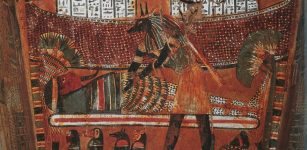 Immortal God Anubis: Lord Of The Sacred Land, Jackal God Of Mummification
Egyptian Mythology | Sep 19, 2016
Immortal God Anubis: Lord Of The Sacred Land, Jackal God Of Mummification
Egyptian Mythology | Sep 19, 2016 -
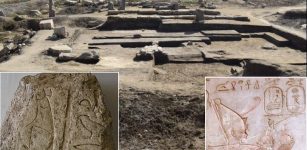 Egyptian Royal Artifacts Found At ‘Ancient Buto’ Site, Egypt Probably Dated To King Psamtik I’s Reign
Archaeology | Jan 4, 2018
Egyptian Royal Artifacts Found At ‘Ancient Buto’ Site, Egypt Probably Dated To King Psamtik I’s Reign
Archaeology | Jan 4, 2018 -
 What Can Grinding Stones Reveal About Europe’s Earliest Neolithic Communities?
Archaeology | Feb 28, 2025
What Can Grinding Stones Reveal About Europe’s Earliest Neolithic Communities?
Archaeology | Feb 28, 2025 -
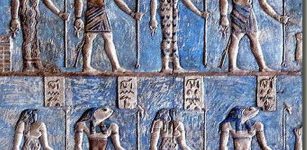 Number Eight Powerful Symbol In Ancient Traditions Of Many Cultures
Ancient Symbols | Dec 8, 2017
Number Eight Powerful Symbol In Ancient Traditions Of Many Cultures
Ancient Symbols | Dec 8, 2017 -
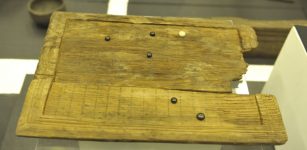 Unique More Than 1,600-Year-Old Board Game With Pieces Recovered From Roman Soldier’s Tomb
Archaeology | Jan 6, 2018
Unique More Than 1,600-Year-Old Board Game With Pieces Recovered From Roman Soldier’s Tomb
Archaeology | Jan 6, 2018 -
 Historical Enigma Of The Ancient Werewolf Ruler – What Powers Did He Possess?
Ancient Mysteries | Jan 9, 2025
Historical Enigma Of The Ancient Werewolf Ruler – What Powers Did He Possess?
Ancient Mysteries | Jan 9, 2025 -
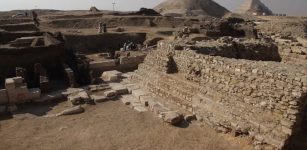 Pyramid Of Unknown Ancient Egyptian Queen And Hundreds Of Mummies Discovered In Saqqara
Archaeology | Nov 17, 2022
Pyramid Of Unknown Ancient Egyptian Queen And Hundreds Of Mummies Discovered In Saqqara
Archaeology | Nov 17, 2022 -
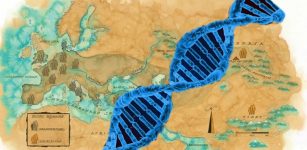 Genetic Fingerprints Of Unknown Species Discovered In Human DNA
Human Beginnings | Dec 31, 2019
Genetic Fingerprints Of Unknown Species Discovered In Human DNA
Human Beginnings | Dec 31, 2019 -
 Longvek – Ancient Historical City That Sheds Light On Cambodia’s ‘Dark Age’
Archaeology | Jan 13, 2016
Longvek – Ancient Historical City That Sheds Light On Cambodia’s ‘Dark Age’
Archaeology | Jan 13, 2016 -
 12,000-Year-Old Crater Dipsiz (‘Bottomless’) Lake, Searched For Gold, And Destroyed In Legal But Controversial Excavation
Archaeology | Nov 17, 2019
12,000-Year-Old Crater Dipsiz (‘Bottomless’) Lake, Searched For Gold, And Destroyed In Legal But Controversial Excavation
Archaeology | Nov 17, 2019 -
 Beautiful Mosaic Dated To Graeco-Roman Times Discovered In Alexandria, Egypt
Archaeology | Jul 22, 2019
Beautiful Mosaic Dated To Graeco-Roman Times Discovered In Alexandria, Egypt
Archaeology | Jul 22, 2019 -
 Ancient City Of Urkesh – Home Of Kumarbi – The Foremost Son Of Anu
Featured Stories | Aug 24, 2020
Ancient City Of Urkesh – Home Of Kumarbi – The Foremost Son Of Anu
Featured Stories | Aug 24, 2020 -
 The ‘Chinese Pyramids’ And The Pole Star
Archaeology | Nov 30, 2018
The ‘Chinese Pyramids’ And The Pole Star
Archaeology | Nov 30, 2018 -
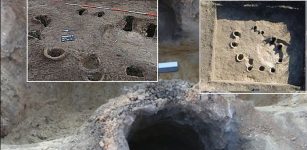 Celts In Poland: Iron Smelting Furnaces Used By Celts 2,400 Years Ago – Unearthed
Archaeology | Nov 30, 2019
Celts In Poland: Iron Smelting Furnaces Used By Celts 2,400 Years Ago – Unearthed
Archaeology | Nov 30, 2019 -
 Excavations Within Benin, Once Capital Of The Great Kingdom Of West Africa
Archaeology | Oct 30, 2025
Excavations Within Benin, Once Capital Of The Great Kingdom Of West Africa
Archaeology | Oct 30, 2025 -
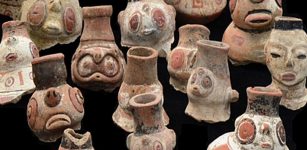 Ancient DNA Tells Story Of Caribbean’s Early Humans
Archaeology | Dec 28, 2020
Ancient DNA Tells Story Of Caribbean’s Early Humans
Archaeology | Dec 28, 2020 -
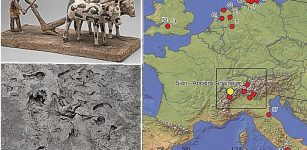 Exciting Find In The Swiss Alps – First Furrows And Animal Tracks Are Evidence Of Prehistoric Plowing
Archaeology | Apr 3, 2024
Exciting Find In The Swiss Alps – First Furrows And Animal Tracks Are Evidence Of Prehistoric Plowing
Archaeology | Apr 3, 2024 -
 Rare ‘Polishing Boulder’ Used By Stone Age People Found In Dorset, UK
Archaeology | Aug 26, 2023
Rare ‘Polishing Boulder’ Used By Stone Age People Found In Dorset, UK
Archaeology | Aug 26, 2023

